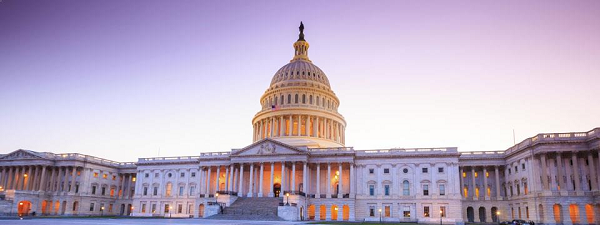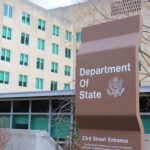I’m an inveterate list maker. I make lists of everything, on everything. Slips of paper containing household to-do’s, a notebook I carry around with me with an office to-do list, a separate notebook for AILA to-do’s. I even make to-do lists for my husband and children, which I am confident they greatly appreciate. On my iPhone I have shopping lists, lists of books I want to read, restaurants I want to visit, movies I want to see, friends I need to catch up with. What is scary is that I have even contemplated making a list of the lists I have to write, but fortunately I’m not quite there yet.
January is the month for those of us who are hard core list makers. It’s the time for reviewing what worked and didn’t work over the past 12 months and making our aspirational lists for the upcoming year—our resolutions. Year-end top ten lists also abound, with everything from top ten movies, books and music to top ten worst movies, books and music.
Sometimes I think government agencies ought to make resolutions and top ten lists too, reviewing their best and worst moments, decisions and policies of the previous year and brainstorming on ways to improve in the coming year. In that spirit, I decided to make and share a Top Five list for USCIS. (I certainly hope they welcome my passion for list-making as much as family does.)
So without further ado, and in no particular order, here is my list of–

Top Five Things USCIS Can Do to Become More Business Friendly, without Congressional Action
• Change the initial period of stay for a new office L transferee from one to two years. All businesses—especially emerging businesses—need a modicum of predictability in government decision-making in order to ensure stability of operations. Allowing an intracompany transferee two years to settle into the U.S. and get a business running affords sufficient time for the individual to focus on the growth of the business, finding customers and making new hires without having to worry about whether his or her stay will be renewed. We have seen too many examples of new businesses that are closed –many resulting in lost U.S. jobs—just when the business is beginning to take off, because a new office extension is denied after one year. A two year period is a much more reasonable period for a business to establish viability and for the agency to evaluate that viability.
• Do not require a new H-1B petition to be filed by an employer every time a new LCA is filed for a change in job location. If an H-1B employer remains the same, and an H-1B position remains the same, an employer should not have to file a new H-1B petition each and every time the employee changes locations, as long as there is a Labor Condition Application (“LCA”) filed for that position for the new location. On the LCA, the employer has made promises to abide by the Department of Labor regulations regarding employment of an H-1B worker in the position at the specific worksite, and the Department of Labor has the power to enforce those promises. This is a gray area. Statements made by agency officials in the past have led many of us to believe that an amended petition is not required, but some adjudicators think otherwise. Requiring the employer to file an H-1B amendment in addition to the LCA is time consuming and wasteful of a company’s money, especially considering that, in order to employ the worker at the new site in any reasonable amount of time, the employer must assume the additional expense of premium processing. It also leads to a high degree of unpredictability and instability for the employer, in the event that the adjudicator of the H-1B amendment disagrees with the prior H-1B adjudication and decides that the worker is not eligible for H-1B status.
• Once an employer has had a certain number of verified site visits, stop! I understand the reasons for the site visit program, and generally, H-1B site visits should not be a problem for the compliant employer. But USCIS should understand that site visits are disruptive of the normal workday and they interrupt productivity. Several of my clients have had repeated site visits, each of which has resulted in a successful verification of information in an H-1B petition. It seems to me that once an employer has gone through a certain amount of successful site visits—say, five, perhaps—they should be placed on a USCIS “good guy” list, and the site visits should stop, at least until there is really a basis to resume them. This is a win-win for the agency and the business world, because it rewards compliant employers and allows them to go about their business, and it frees the fraud inspectors to move on to employers whose practices may deserve more serious attention.
• Revamp the biometrics process. Find a way to re-use biometrics for benefit applications filed within a specific period of time. Set up biometrics appointments up front, at the receipt stage, for internationally mobile lawful permanent residents and their family members who are applying for re-entry permits. This will avoid the inconvenience and often very high business expense of requiring them to return to the US for fingerprinting after being assigned temporarily abroad.
• Promulgate a regulation requiring the Administrative Appeals Office (AAO) to adjudicate an appeal of a benefit denial within a reasonable amount of time. Especially in the context of nonimmigrant visa denials, an appeal should not take more than 30 days. The AAO will never be a meaningful route of redress for employers who file nonimmigrant petitions for key workers with an average processing time of almost two years for H and L appeals. Most employers with denied nonimmigrant visa petitions will undertake the additional expense of re-filing the petition or pursue other nonimmigrant options rather than file an appeal, even when they believe that the denial was legally erroneous. When petitioners decide to leave unresolved legal issues on the table and walk away from a denial, this severely diminishes the AAO as a significant player in the development of legal jurisprudence in the immigration field.
OK, five was a nice number for this blog, but I can’t resist. Here’s a sixth:
• Address—quickly and effectively—the growing incidence of Requests for Evidence and denials in the nonimmigrant visa extension context. Where all of the initial elements of eligibility for the benefit have either stayed the same or improved, there should be no reason for a Request for Evidence or a denial unless the initial decision was an erroneous one. But we are seeing too many instances of denials on extensions to believe that each one of these involved an erroneous initial determination. While petitioners seeking an extension for an employee must often re-submit the same evidence to support an extension as they submitted for the initial determination, adjudicators who are about to issue a request for evidence or a denial should be required to access and review the original filing before doing so to determine whether there has been a material change in eligibility since the first filing, or a legal error was made in the initial approval. While employers understand that they may have to send in the same paperwork twice in order to get an extension, they have a right to expect adjudicators to respect and support each other’s prior decisions in a particular case. Again, this is key to stability and predictability for businesses that rely on foreign talent.
Of course I have more than just six ideas (ideas number 7 et seq are on another list . . .) but I thought I would just start with these. I welcome other AILA members to come up with their own lists and share them with me.






